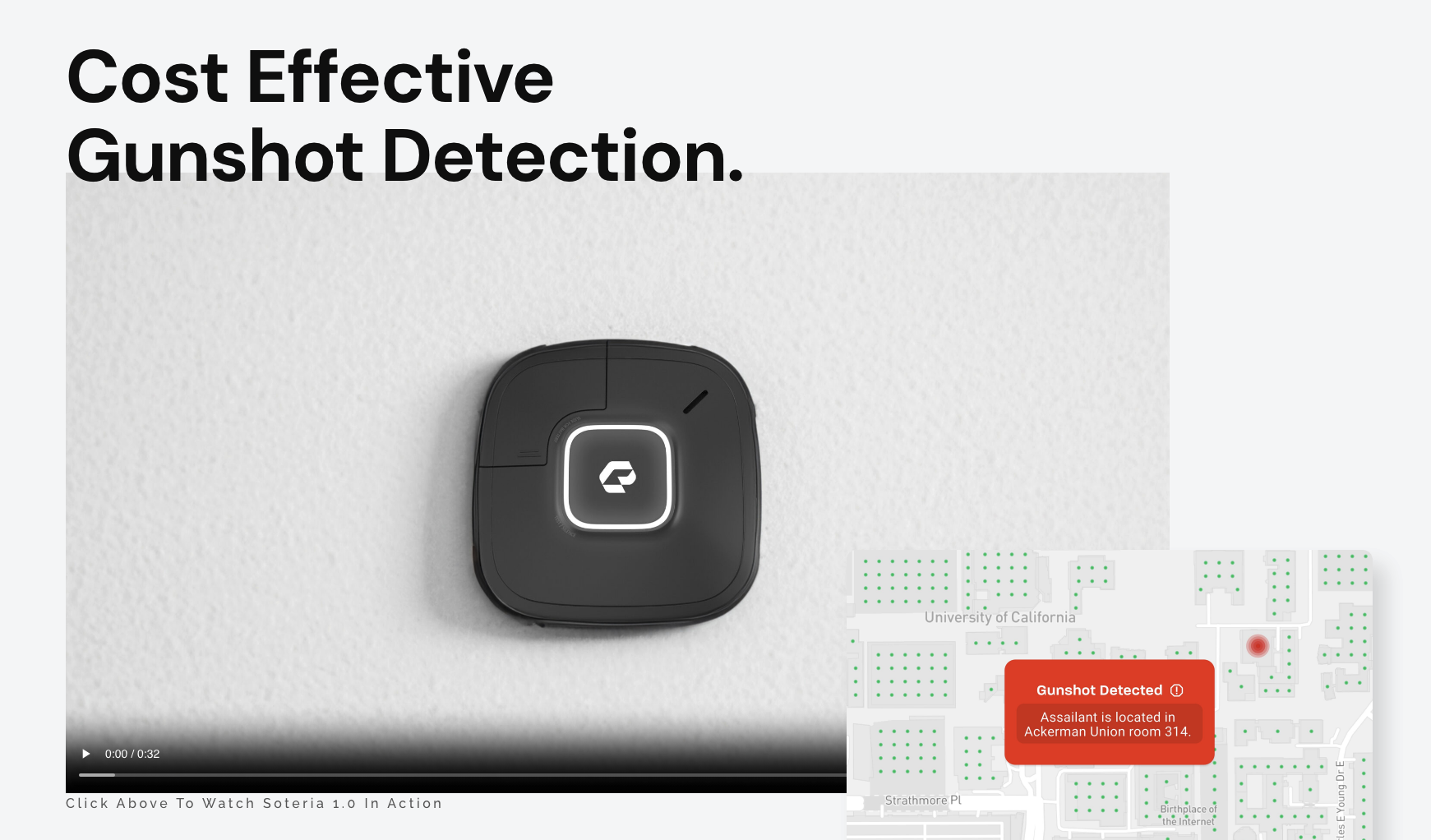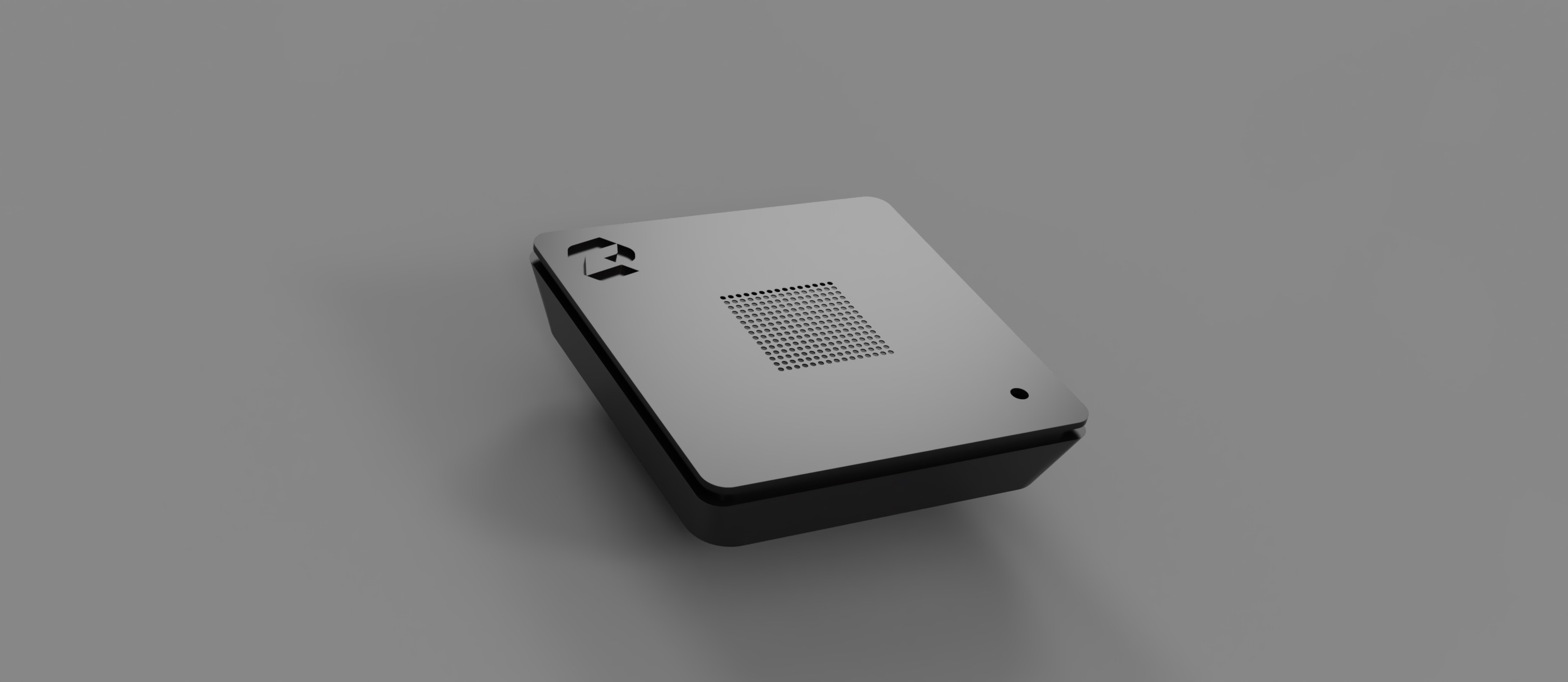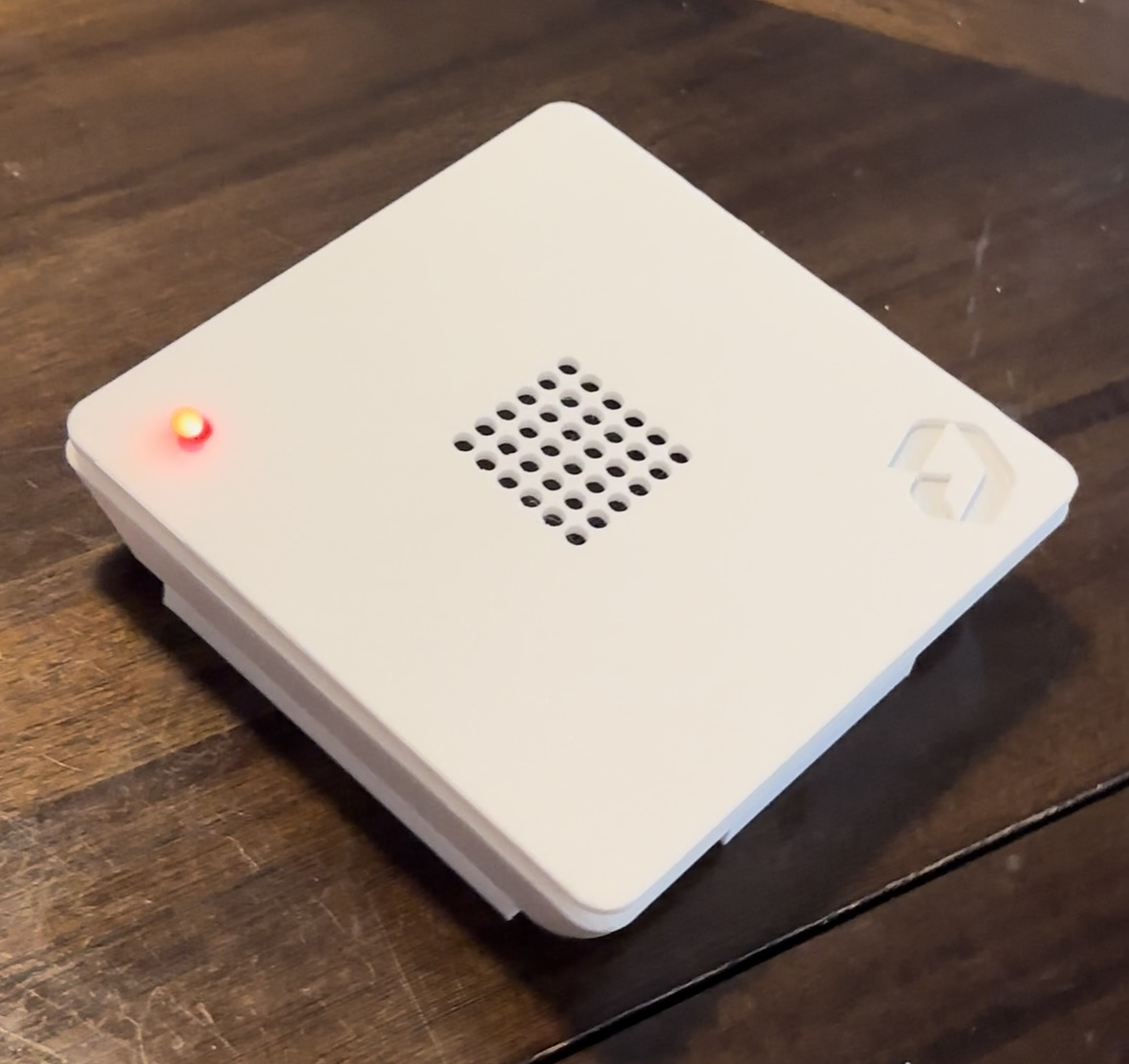Note: I received prior consent to share this information with the public
General Overview
A summary of my work as part of building Soteria 1.0, a gunshot detection system for use indoors to reduce fallout and deter mass shooting events.
-
Project Duration: ~1 years
-
Role: Embedded Software Engineer
-
Responsibilities: Prototyping, design, development, and testing

Features
- High accuracy gunshot detection
- Mesh Network and backup systems for high reliability
- 3 year battery life
- Shot triangulation
- OTA updates
Technical Challenges and Solutions
This project came with its own set of limitations and challenges right from the get-go. Security was a big focus for us as the technology that we were using possessed microphones, which if compromised could lead to a bad actor listening to conversations in classrooms or anywhere that the device is used. With this in mind, I recommended that we use an RF mesh network rather than using BLE or Wifi. The RF mesh network uses a particular selected band of frequency and is highly redudant, becoming more redudant with more devices placed, if one device is tampered with or set off, it will alert all devices in the proximity, which could range anywhere from 20-100m depending on the environment the signal is emitted from.
In addition to commuication protocols and protection from exterior attacks, as a team we worked to comply with ITAR as the manufacturing origin of chips could prove a security vulnerability.
Versions I worked on
Soteria 1.0
I worked as part of the team developing Soteria 1.0, the first iteration of the gunshot detection system. The CAD design depicted below was created by me and was the first mockup that was later 3D printed for secondary versions.

Below is the 3D printed version, which actually possesses the necessary hardware and battery internally, and has a removable sliding cover on the back for hardware access. This ended up being the MVP that was presented to investors.

Thanks for reading!